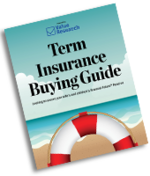
Kabir (27) is an IT professional and has a monthly in-hand salary of about Rs 1 lakh. His wife is a homemaker. They have a baby girl and live in their own house. The family's monthly expenditure amounts to Rs 50,000. This also includes a home-loan EMI of Rs 25,000.
Kabir has accumulated a corpus of Rs 14 lakh, which is spread across the Employees' Provident Fund (EPF), equity mutual funds and National Savings Certificates (NSC). Kabir wants us to draw a financial road map for him.
Emergency fund
Kabir does not have an emergency fund. An adequate emergency corpus, which is equivalent to at least six months of expenses, including EMIs (if any), is the foundation for a financial plan. It supports you during any unforeseen financial emergency.
In Kabir's case, the emergency corpus works out to be Rs 3 lakh. It should be maintained in a combination of sweep-in deposits and a short-duration fund, which will help him earn higher returns without compromising on liquidity. For this, Kabir can set aside some amount every month from the surplus in his income.
Action: Create an emergency corpus of Rs 3 lakh.
Health insurance
Kabir has a family-floater plan of Rs 4 lakh, which also covers his wife. It will also start covering his daughter when she turns 91 days. A health cover of Rs 4 lakh should be sufficient for the family. However, it should be revised every two-three years to stay in line with rising inflation and medical costs.
Action: Maintain the existing health cover.
Life insurance
Kabir doesn't have life insurance. Buying a life cover is necessary for anyone who has financial dependents. Kabir's wife and daughter are financially dependent on him. Further, he has a home loan of Rs 20 lakh. Hence, he should buy a term plan of at least Rs 1 crore to take care of the outstanding home loan and his family's living expenses in his absence. A pure term plan of Rs 1 crore would cost him around Rs 8,000 to Rs 9,000 per annum.
Action: Buy a pure term plan of Rs 1 crore.
Retirement
Going by his current expenses, Kabir would need a retirement corpus of around Rs 4.14 crore to maintain the same lifestyle. His EPF is likely to fetch Rs 1.55 crore, assuming an average return of 8 per cent. His current investment in equity mutual funds is valued at around Rs 8 lakh. Assuming a modest return of 12 per cent, this alone can meet the deficit if he stays invested throughout his remaining working life of 33 years.
Action: Earmark your EPF contribution and current equity investments for retirement.
Daughter's higher education
Kabir wants a corpus of Rs 50 lakh in today's value for his daughter's higher education. It will be needed in approximately 18 years. Assuming a modest return of 12 per cent per annum along with inflation of 6 per cent, an SIP of Rs 11,200 in a pure equity fund should help him accumulate the target amount. However, he needs to increase his contribution by 10 per cent every year, which can easily be achieved with his annual appraisals.
Kabir has ongoing SIPs of around Rs 32,000 across various mutual fund schemes. He may earmark Rs 11,200 from the same for this goal.
Action: Earmark an SIP of Rs 11,200 in pure equity funds for your daughter's higher education. Increase it by 10 per cent every year.
Other goals
Kabir has three more goals on his wish list - a foreign trip, a new car and the renovation of his house. Kabir wants to create a sufficient corpus for his new car, which he plans to buy after eight years. He estimates the cost of the car (as of today) to be Rs 8 lakh.
Assuming inflation at 6 per cent, Kabir would need around Rs 12.75 lakh after eight years to buy the car. An SIP of Rs 6,400 in an equity fund will help him achieve this goal (assuming a 12 per cent return). But he must increase the contribution by 10 per cent every year.
Similarly, he wants to renovate his house after 15 years. This will likely cost him around Rs 15 lakh in today's value. An SIP of Rs 4,700 in an equity fund would be sufficient for this goal.
Kabir also wants to go on a foreign trip, which according to him, would cost him around Rs 10 lakh as of today. He is likely to be left with a monthly surplus of around Rs 25,000 after deducting the above-mentioned expenses and SIPs. He should use it first to create the required emergency corpus and later to invest for the foreign trip. Thereafter, it can be invested in a multi-cap fund for long-term wealth creation.
Action: Earmark an SIP of Rs 11,100 in multi-cap funds for home renovation and buying a car.
Funds
Kabir's mutual fund portfolio doesn't need any major change as it is well-diversified, with around 50 per cent, 35 per cent and 15 per cent invested in large-cap, mid-cap and small-cap funds, respectively.
Kabir also holds a value fund in his portfolio. Value funds are quite similar to multi-cap funds, with the only difference being the investment strategy. Like multi-cap funds, these funds also invest in companies of different sizes across different sectors but limit their stock selection to the value strategy. It's a good idea to allocate 20 to 30 per cent of your multi-cap portfolio to a value fund. This helps you diversify your portfolio in terms of investment style.
However, Kabir should make sure that he does not add any new fund to his portfolio. Too many funds make managing the portfolio difficult. Also, on maturity, he should move his investments from the NSC to equity funds for better returns over a long period. Though NSC gives you a guaranteed return, it hardly helps beat inflation in the long run.
Action: Do not add any new fund to your portfolio.
Keep in mind
- It's essential to have an emergency fund to meet any unforeseen financial situation.
- The emergency fund should be equal to at least six months of expenses.
- If you have financial dependents, you must buy life insurance.
- For life insurance, term insurance is best as it provides a large cover at a reasonable cost.
- Incorporating a value fund in your portfolio provides diversification in terms of style.



__w1000__h564__.jpg)





